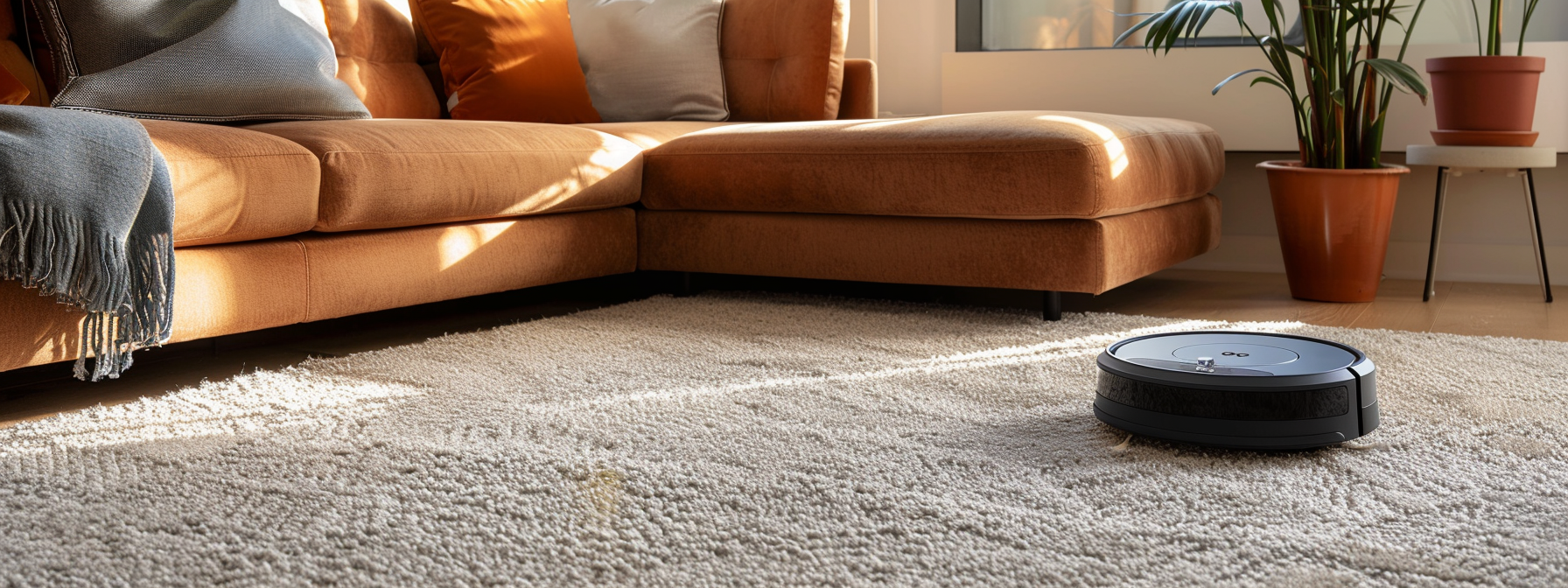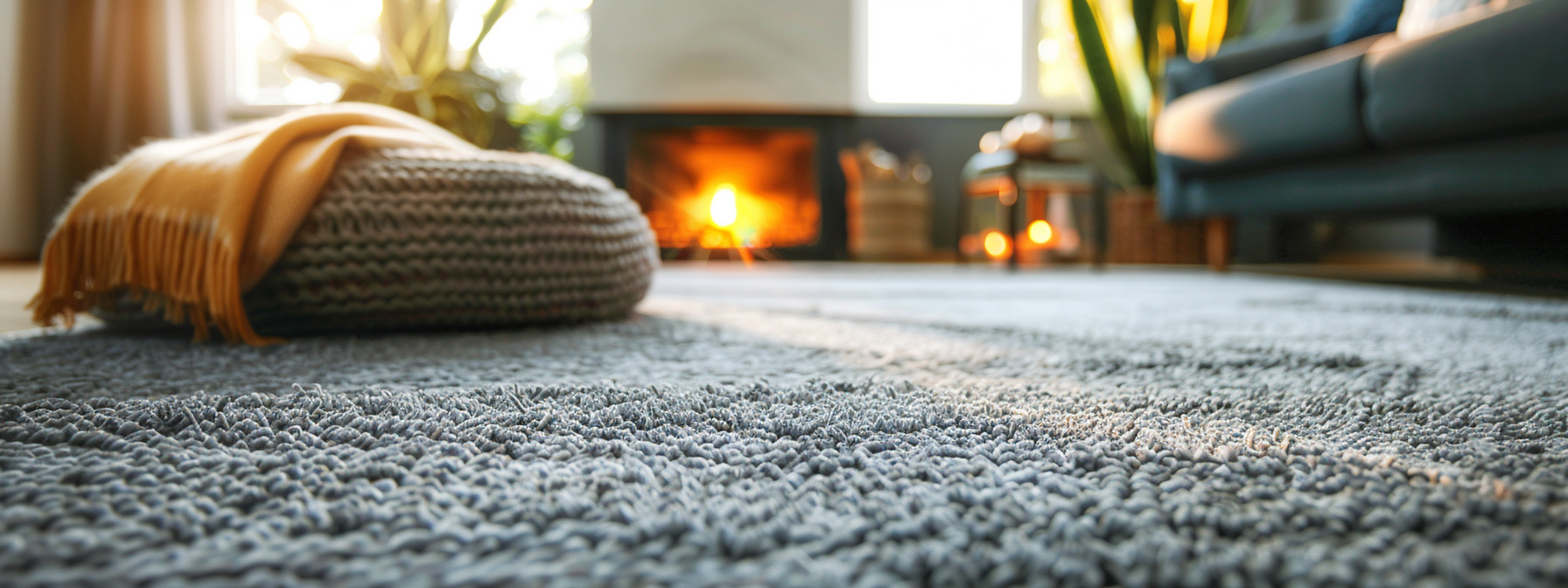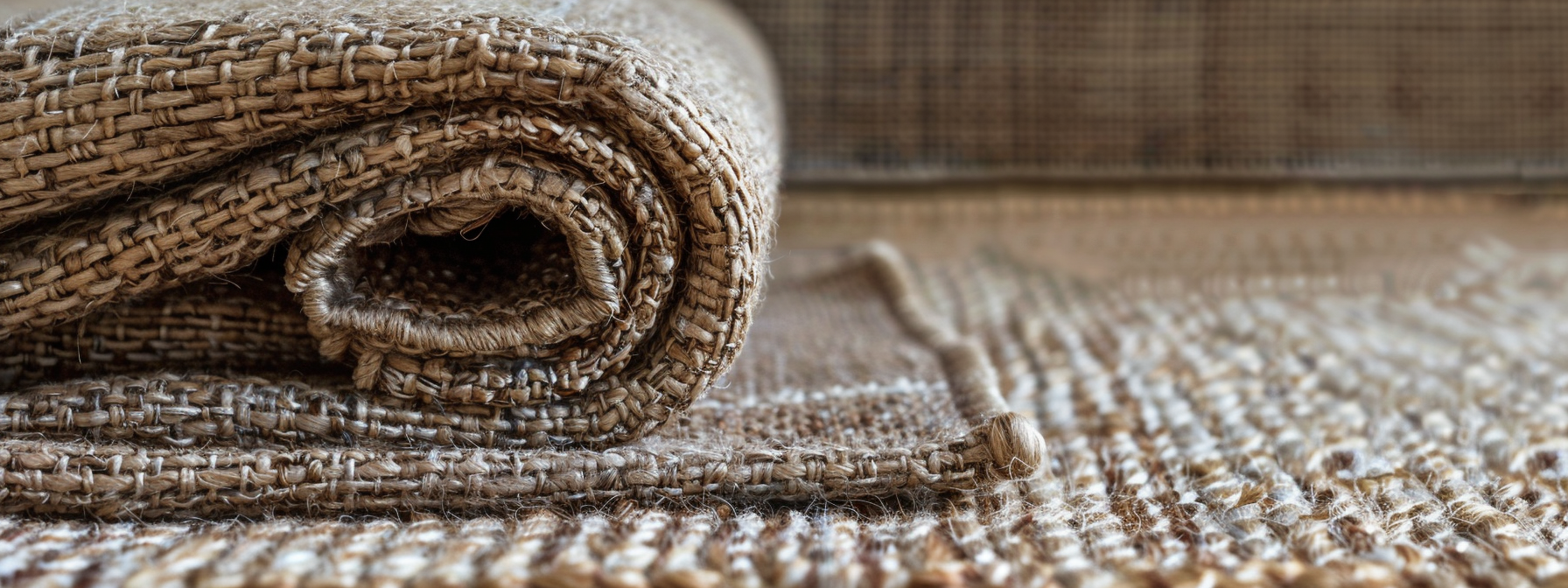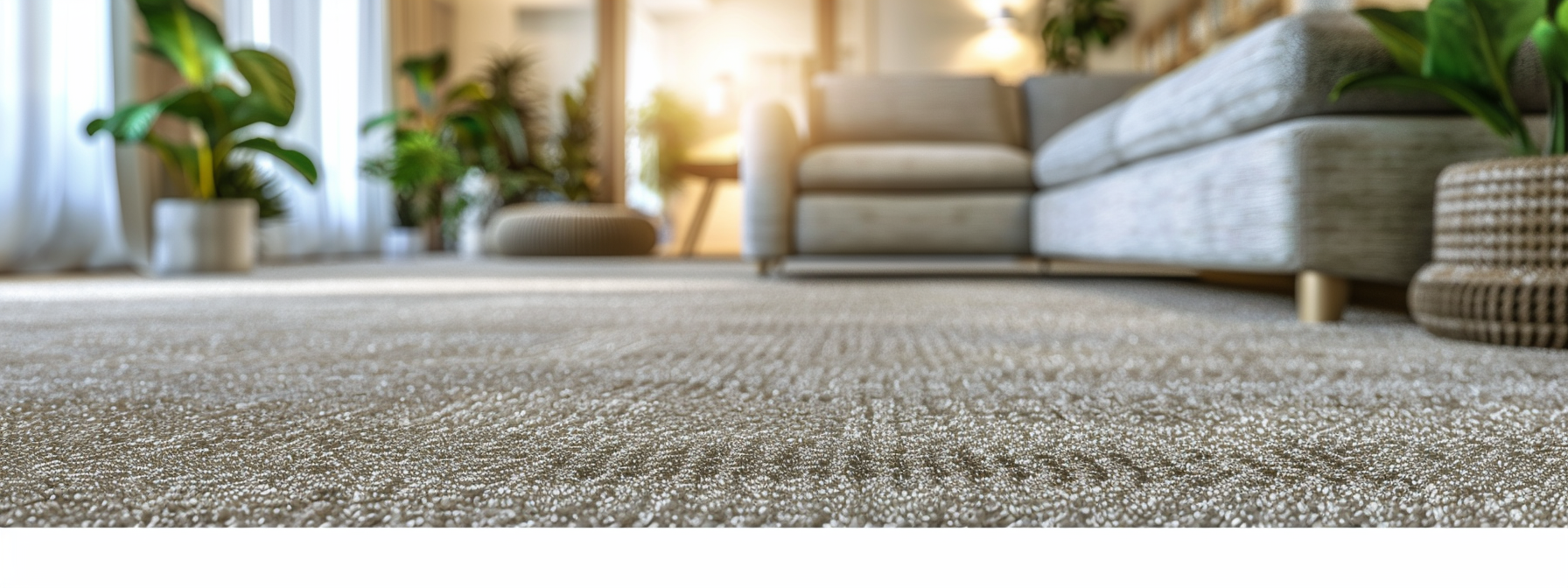Eco-Friendly Carpet Care: Sustainable Practices for Everyday Maintenance

Traditional carpet care methods often involve chemicals that can harm the environment through water pollution and toxic waste.
As awareness grows, more homeowners and businesses are turning towards eco-friendly carpet care practices, recognizing their role in promoting a sustainable and healthier living environment.
- Eco-Friendly: Practices or products that are not harmful to the environment, often using natural resources responsibly and minimizing pollution throughout their lifecycle.
- Sustainable Practices: Methods of maintaining something (such as home maintenance) in a way that allows it to be used without being completely used up or destroyed, and often emphasizes preservation of the environment.
Adopting eco-friendly and sustainable carpet care practices not only reduces the ecological footprint but also often results in a safer, non-toxic environment for families and pets.
Eco-Friendly Carpet Materials
The choice of carpet material is important in sustainable home maintenance. Eco-friendly carpets are typically made from natural fibers or recycled materials, offering an environmentally sound alternative to synthetic options.
Natural Fibers:
- Wool: Durable and stain-resistant, wool carpets are luxurious and effectively trap dust, pollen, and other allergens.
- Sisal: Made from the agave sisalana plant, sisal carpets are highly durable and perfect for high-traffic areas, offering a rougher texture that is ideal for scraping off dirt.
- Jute: Softer than other natural fibers and often used in low-traffic areas, jute offers a warm, earthy aesthetic and is fully biodegradable.
Recycled Materials:
- Carpets made from recycled plastics and other materials help reduce landfill waste. These carpets are increasingly popular due to their resilience and sustainability credentials.
The benefits of choosing eco-friendly carpet materials include reducing environmental impact through the use of sustainable resources and improving indoor air quality by avoiding the off-gassing associated with many synthetic carpets.
By selecting carpets made from natural or recycled materials, homeowners can enjoy a beautiful, durable floor covering that aligns with their ecological values and contributes to a healthier home environment.
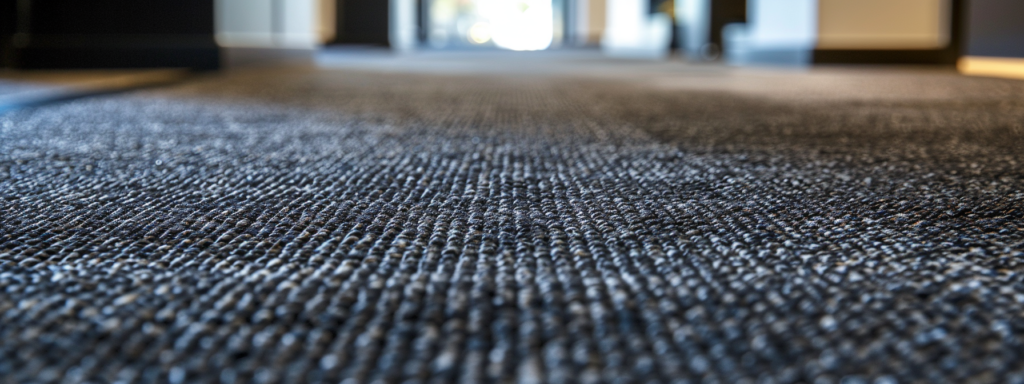
Sustainable Cleaning Solutions and Techniques
In the shift towards more eco-conscious living, choosing natural cleaning agents for carpet care is a significant step. Ingredients like vinegar, baking soda, and essential oils are not only safe for the environment but also effective in maintaining the cleanliness and longevity of your carpets.
These readily available, non-toxic alternatives to chemical cleaners can tackle a variety of cleaning tasks without leaving harmful residues.
Natural Cleaning Agents
- Vinegar: An excellent all-purpose cleaner, vinegar effectively breaks down dirt, neutralizes odors, and is particularly good at removing light stains and freshening up carpets.
- Baking Soda: Known for its deodorizing properties, baking soda can be sprinkled on carpets to eliminate odors. When combined with other ingredients, it also helps lift stains.
- Essential Oils: Adding essential oils like lavender, lemon, or tea tree to homemade carpet cleaners can provide additional antibacterial and fragrance benefits, enhancing the cleaning process and indoor air quality.
Here are some DIY cleaning recipes and techniques that utilize these natural products, offering eco-friendly solutions for maintaining your carpets:
- Basic Spot Cleaner:
- Ingredients: 1 cup warm water, 1 cup white vinegar, 2 teaspoons salt, and 15 drops of essential oil (e.g., lavender or eucalyptus).
- Method: Mix all ingredients in a spray bottle. Spray on stains, let sit for 10 minutes, then blot with a clean, dry cloth until the stain lifts.
- Deodorizing Powder:
- Ingredients: 1 cup baking soda, ½ cup cornstarch, 15 drops of your favorite essential oil.
- Method: Mix ingredients and sprinkle the powder over the carpet. Allow it to sit for at least 30 minutes or overnight for deeper odors, then vacuum thoroughly.
- All-Purpose Carpet Cleaner:
- Ingredients: ¼ cup white vinegar, ¼ cup baking soda, 1 teaspoon liquid dish soap, and 2 gallons warm water.
- Method: Combine ingredients in a large bucket. Use a sponge or brush to apply the solution to the carpet, then scrub gently. Wipe clean with a moist cloth to avoid leaving soap residue.
- Heavy-Duty Stain Remover:
- Ingredients: 2 tablespoons salt dissolved in ½ cup white vinegar.
- Method: Apply the solution directly to heavier stains, let it sit until dry, then vacuum. For tougher stains, add 2 tablespoons of borax to the mixture and follow the same process.
These DIY recipes provide effective, environmentally friendly ways to clean and maintain your carpets, reducing the need for harsh chemical cleaners and supporting a healthier home and planet. Each recipe is designed to maximize cleaning power while minimizing environmental impact, ensuring your carpet care routine remains as green as possible.
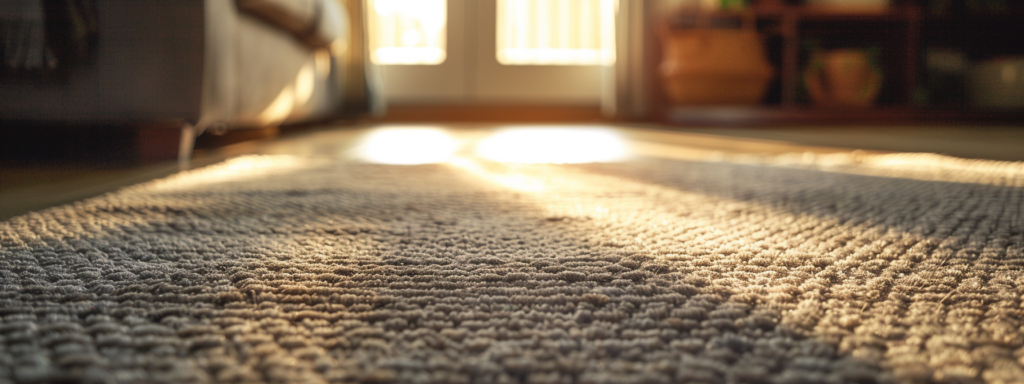
Tips for Reducing Carpet Wear and Tear
Extending the life of your carpets not only enhances the aesthetic appeal of your home but also contributes to environmental sustainability by reducing waste and the need for frequent, chemical intensive cleanings.
Adopting simple, practical measures can significantly decrease the wear and tear on your carpets, helping them to last longer and remain in good condition.
- Practical Measures: Steps or actions taken to prevent damage and extend the lifespan of an item.
- Wear and Tear: The damage or deterioration caused by ordinary and typical use over time.
Here are some effective strategies to minimize carpet wear and tear:
- Remove Shoes Indoors:
- Encouraging household members and guests to remove their shoes upon entering can drastically reduce the amount of dirt and grit tracked onto carpets. These particles can act like sandpaper, wearing down carpet fibers over time. Consider providing a shoe rack or designated shoe area near entryways to facilitate this habit.
- Use Chair Mats:
- Under office chairs or other furniture that moves frequently, use protective chair mats. These mats not only prevent repetitive strain on carpets but also make chair movement smoother and easier, preventing pulling and snagging of carpet fibers.
- Deploy Area Rugs and Runners:
- In high-traffic areas, place area rugs or runners to absorb the brunt of foot traffic and protect underlying carpeting. This is particularly effective in hallways, kids’ play areas, and near exterior doors. Ensure these rugs are secured with non-slip pads to prevent movement and possible injury.
- Rotate Furniture and Rugs Regularly:
- Periodically changing the layout of your room and rotating rugs can help distribute wear more evenly across the carpet. This prevents certain areas from becoming overly worn or faded.
- Regular Vacuuming and Spot Cleaning:
- Maintain a routine vacuuming schedule, aiming for at least once a week and more frequently in high-traffic zones. Promptly address spills by blotting (not rubbing) the area with a clean cloth and using appropriate cleaning solutions to prevent stains from setting in.
- Professional Cleaning:
- Even with diligent care, having your carpets professionally cleaned once a year or as needed can rejuvenate fibers and remove deeply embedded dirt that regular vacuuming can’t reach.
By implementing these simple yet effective measures, you can significantly prolong the life of your carpets, ensuring they continue to add comfort and beauty to your home while supporting your commitment to sustainability.
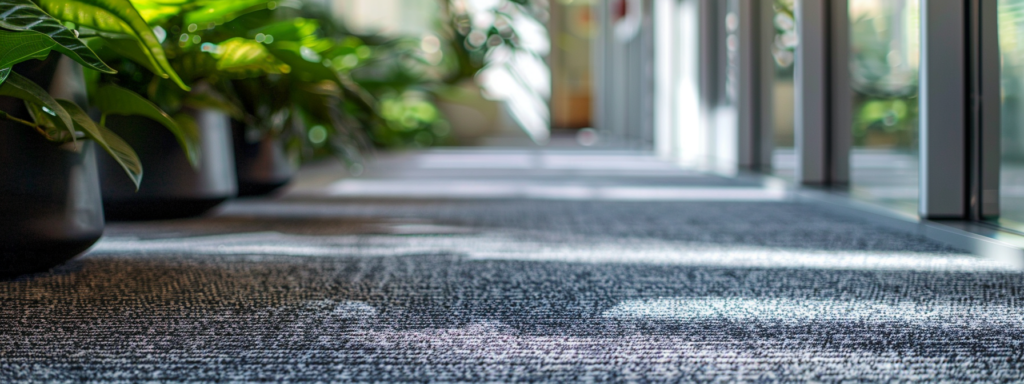
How to Dispose of or Recycle Old Carpets
When carpets reach the end of their useful life, it’s important to consider environmentally friendly disposal options. Proper disposal helps reduce landfill waste, supports recycling efforts, and promotes the use of sustainable materials.
Exploring options for recycling or donating old carpets can make a significant difference in environmental conservation efforts.
Here are several resources and methods for responsibly disposing of old carpets:
- Recycling Facilities: Many communities have recycling centers that accept old carpets, which can then be processed and turned into new products. Check with your local waste management facilities to find out if they offer carpet recycling.
- Charitable Organizations: Some charities accept used carpets, especially if they are still in good condition. These carpets are either used in charitable projects or sold in thrift stores to raise funds for the organization.
- Carpet Reclamation Programs: Several carpet manufacturers run take-back programs where they reclaim old carpets to recycle into new carpet products. Research manufacturers that offer such programs as a part of their commitment to sustainability.
- Specialized Carpet Recycling Services: There are companies that specialize in carpet recycling. These services assess the material type and condition of the carpet and process it accordingly, often repurposing it into products like insulation, new carpets, or automotive parts.
By utilizing these resources, you can ensure that your old carpets are disposed of in a manner that minimizes environmental impact and supports sustainable practices.
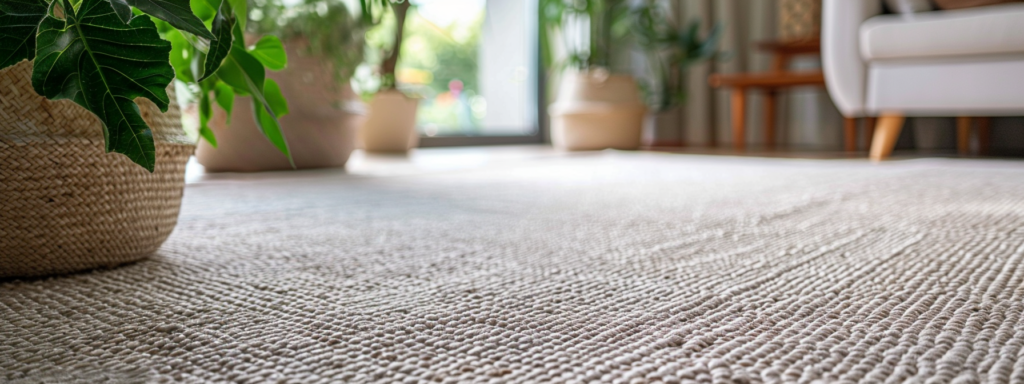
Integrating Eco-Friendly Practices into Daily Life
Embracing eco-friendly carpet care practices is a practical way to contribute to environmental conservation. By integrating these sustainable habits into your daily life, you can help reduce the ecological footprint of your home while enjoying a clean and healthy living environment. I encourage you to start today by selecting one or two new practices to adopt.
Whether it’s switching to natural cleaning solutions, investing in eco-friendly carpet materials, or properly recycling your old carpet, every small step counts towards making a big difference. Join the movement towards a more sustainable future by making eco-friendly choices in your carpet care routine.
Author
-

As the Co-Owner of Masterful, Randy has been providing quality cleaning services to the Salem and Portland areas of Oregon for many years. He has built a reputation for excellence in the industry. His team take prides in using the latest cleaning techniques and technologies to deliver exceptional results every time.


